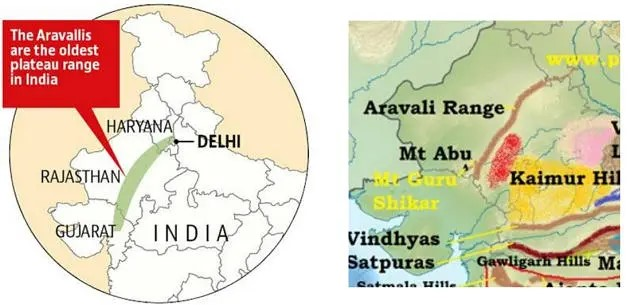Chhattisgarh Switch to Hindi
Ten Naxalites Surrender in Chhattisgarh
Why in News?
Recently, ten Naxalites including four minors surrendered in Chhattisgarh’s Dantewada district.
Key Points
- The 815 Naxalites have so far quit violence in the district under the ‘Lon Varratu’ (return to your home) campaign launched in June 2020 by the police.
- Lone Varratu:
- This campaign means ‘Come back home’.
- This campaign was launched for those Naxalites who intended to leave the path of red terror and join the mainstream of society.
- Under this campaign many Naxalites left the path of terrorism.
Naxalism
- The term Naxalism derives its name from the village Naxalbari of West Bengal.
- It originated as rebellion against local landlords who bashed a peasant over a land dispute.
- The movement soon spread across Eastern India in less developed areas of states such as Chhattisgarh, Odisha and Andhra Pradesh.
- Left-wing extremists (LWE) are popularly known as Maoists worldwide and as Naxalites in India.
- Objective:
- They advocate for the overthrow of the Indian government through armed revolution and the establishment of a communist state based on Maoist principles.
- They view the state as oppressive, exploitative, and serving the interests of the ruling elite, and seek to address socio-economic grievances through armed struggle and people's war.


Uttar Pradesh Switch to Hindi
Improved Groundwater Level in districts of Uttar Pradesh
Why in News?
According to the notification issued by the Namami Gange and water supply section-3 of the state, the groundwater level in 32 districts of the state, including Prayagraj, has experienced an enhancement, leading to a decrease in critical zones.
Key Points
- The groundwater department in Prayagraj explained that they analyze various parameters to determine whether a district falls under the safe, critical, semi-critical, or over-extracted zone.
- The primary consideration is the balance between water extraction and recharge. Following an in-depth annual assessment, they classify each district accordingly.
- The districts across the state which are in safe zones include Prayagraj, Pratapgarh, Kaushambi, Fatehpur, Varanasi, Jaunpur, Agra, Firozabad, Mainpuri, Mathura, Aligarh, Etah, Hathras, Badaun, Chitrakoot, Mahoba, Kanpur Nagar, Kannauj, Meerut, Baghpat, Bulandshahar, Gautam Buddha Nagar, Ghaziabad, Hapur, Mirzapur, Moradabad, Amroha, Bijnor, Sambhal, Saharanpur, Muzaffarnagar and Shamli.
Namami Gange Programme
- It is an Integrated Conservation Mission, approved as a ‘Flagship Programme’ by the Union Government in June 2014 to accomplish the twin objectives of effective abatement of pollution and conservation and rejuvenation of National River Ganga.
- It is being operated under the Department of Water Resources, River Development and Ganga Rejuvenation, Ministry of Jal Shakti.
- The program is being implemented by the National Mission for Clean Ganga (NMCG), and its state counterpart organizations i.e State Program Management Groups (SPMGs).
- NMCG is the implementation wing of National Ganga Council (set in 2016; which replaced the National Ganga River Basin Authority - NGRBA).
- It has a Rs. 20,000-crore, centrally-funded, non-lapsable corpus and consists of nearly 288 projects.
- The main pillars of the programme are:
- Sewage Treatment Infrastructure
- River-Front Development
- River-Surface Cleaning
- Biodiversity
- Afforestation
- Public Awareness
- Industrial Effluent Monitoring
- Ganga Gram


Uttar Pradesh Switch to Hindi
New Courses Added to BHU’s Swayam Programme
Why in News?
The faculty members of the Banaras Hindu University have developed 15 courses for the SWAYAM programme for the 2024 session. The courses have been developed in line with requirements and expectations of the learners.
Key Points
- These courses cover various subjects like management, commerce, science, medicine, social sciences, humanities, and philosophy.
- BHU has entered the realm of online education for the first time with the introduction of these courses.
- The initiative not only enriches BHU's educational offerings but also supports the broader goals of providing accessible and quality education for everyone.
- The technical support for the courses is provided by IIT Madras and IIT Kanpur, with funding from the Ministry of Education, Government of India.
- SWAYAM, launched by the Government of India, aims to make the best teaching and learning resources available to all individuals, regardless of their geographical location or institutional affiliations.
SWAYAM programme
- Study Webs of Active Learning for Young Aspiring Minds (SWAYAM), was launched on July 9, 2017 by the Ministry of Human Resource Development to provide one integrated platform and portal for online courses.
- This covers all higher education subjects and skill sector courses.
- The objective is to ensure that every student in the country has access to the best quality higher education at the affordable cost.
- Academicians from hundreds of institutions throughout the country are involved in developing & delivering Massive open online courses (MOOCs) through SWAYAM in almost all disciplines from senior schooling to Post Graduation.


Uttarakhand Switch to Hindi
Workers Rally Against Anti-Encroachment Drives
Why in News?
A large public rally took place at Gandhi Park to commemorate the 92nd anniversary of the Tilari agitation. The participants included daily wage earners and members of social organizations that were protesting against the anti-encroachment activities initiated by civic bodies.
Key Points
- The drives are being carried out in compliance with the National Green Tribunal's directives to remove illegal structures from the flood plains of the Rispana river.
- Despite the municipal commissioner agreeing that any valid ID could be used as proof of residence, the documents were rejected by Mussoorie Dehradun Development Authority (MDDA).
- The protester highlighted the lack of time given to challenge these rejections and avoid their families' eviction.
Tilari Agitation
- On May 30, 1930, a significant satyagraha took place at Tilari against the forestry policies of Tehri Garhwal state, which resembled those implemented by the British in the rest of Uttarakhand.
- While the Maharaja of Tehri was away in Europe, his Prime Minister, Chakradhar Juyal, brutally suppressed the Tilari protest in a manner reminiscent of the Jallianwala Bagh tragedy.
- Troops gunned down defenseless individuals, including young ones, and numerous perished in the Yamuna River while attempting to escape.


Haryana Switch to Hindi
Massive Fire in Morni Forest
Why in News?
Recently, Morni Hills, the solitary hill station in Haryana, faced a significant forest fire due to temperatures exceeding 46°C.
Key Points
- The extreme heat and arid conditions fed the fire, causing it to rapidly spread through a vast area of the hills, consuming shrubs, bushes, and trees in its wake.
- Morni Hills located in the lower part of the Shivalik range, this area stands at an altitude of 3,600 feet above sea level, boasting a diverse variety of plants and animals.
- Various hills and ranges can be found in different parts of Haryana.
- The Shivalik Range is situated in the north of Haryana, the Aravalli Range stretches from the southwest through Haryana, Rajasthan, Gujarat, and Delhi.
- Morni Hills are situated in the Panchkula district, being the sole hill station in Haryana, while Dhosi Hills in the Mahendragarh district are known for being an extinct volcano.
The Aravalli Range
- The Aravallis are one of the oldest fold residual mountains of the world composed primarily of folded rock strata. This formation resulted from the convergence of tectonic plates during the Proterozoic Era (2500-541 million years ago).
- The Forest Survey of India (FSI) report, defined the Aravallis to include the hills and a uniform 100-meter-wide buffer zone around the downsides of the hills.
- They have an elevation of 300m to 900m. The mountains are divided into two main ranges – the Sambhar Sirohi Range and the Sambhar Khetri Range in Rajasthan.
- Guru Shikhar Peak on Mount Abu is the highest peak in the Aravalli Range (1,722 m).
- Major tribal communities include the Bhil, Bhil-Meena, Meena, Garasia, and others.
- The Supreme Court in 2009 ordered a complete ban on mining in the Aravalli hills of Faridabad, Gurgaon, and Nuh districts of Haryana
.






%20MPPCS%202025%20Desktop%20E.jpg)
%20MPPCS%202025%20Mobile%20E%20(1).jpg)










.png)
.png)











 PCS Parikshan
PCS Parikshan


